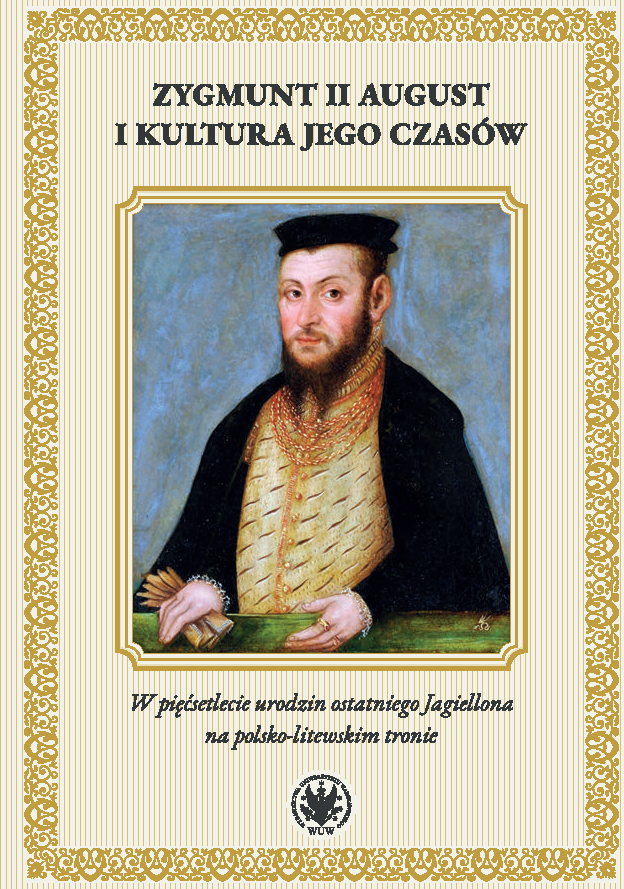Ze studiów nad zakupami tekstyliów dla króla Zygmunta Augusta po roku 1560
On Sigismund Augustus’ Textile Purchases after 1560
Author(s): Ryszard Szmydki, Piotr Józef Janowski
Subject(s): Cultural history, 16th Century, 17th Century, 18th Century, History of Art
Published by: Wydawnictwa Uniwersytetu Warszawskiego
Keywords: black-and-white heraldic tapestries; Sigismund Augustus; Roderigo Dermoyen; Sebald Linck; Jan Kostka of Sztemberk; Gdańsk; Brussels; Antwerp; Lübeck; Netherlands
Summary/Abstract: Between 1559–1560, Roderigo Dermoyen, a tapestry weaver from Brussels, delivered a series of heraldic-monogramic themed tapestries, richly embroidered with gold and silk, to Poland for King Sigismund Augustus. They remain today under the custody of the Wawel Royal Castle National Art Collection. After 1560, Roderigo Dermoyen lived with his family in the Hanseatic city of Lübeck at 42 Dr. Julius Leber Straße. There is a great likelihood that the tapestries had been stored at the same location before being sent to Poland and Sweden. One cannot rule out the possibility that a weaving workshop operated under the address. Circa 1564, Dermoyen was commissioned by the King of Poland to weave a collection of black-and-white heraldic tapestries. The textiles reached the destination only two years later and were deposited at the Fortress of Tykocin. Another intriguing case of textile purchase made by Sigismund Augustus was a series of black-and-white velvet fabrics woven between 1560–1572 by the court embroiderer, Sebald Linck (died after 1579). Similarly to tapestries, the fabrics were used during funeral ceremonies following the death of the Commonwealth’s monarchs as well as members of the Polish Vasa dynasty. Sigismund Augustus’ affection for tapestries should be read as a well-considered token of approval for the mannerist aesthetic, also influenced by the monarch’s passion for collecting art. The article also sheds a light on the king’s confidant, Jan Kostka of Sztemberk, Castellan of Gdańsk (circa 1529–1581). Not only was he responsible for implementing the monarch’s policies but he also participated in the purchase of textiles. It has only been possible to assess his role in commissioning tapestries thanks to a letter never published before, written by Sigismund Augustus to Jan Kostka in Kojdanów, dated 23 December 1567, wherein the king ordered the addressee to purchase fabric for his Tatar soldiers. Additionally, the letter provides an insight into the complex political situation of the time.
Book: Zygmunt II August i kultura jego czasów
- Page Range: 154-171
- Page Count: 18
- Publication Year: 2022
- Language: Polish
- Content File-PDF

